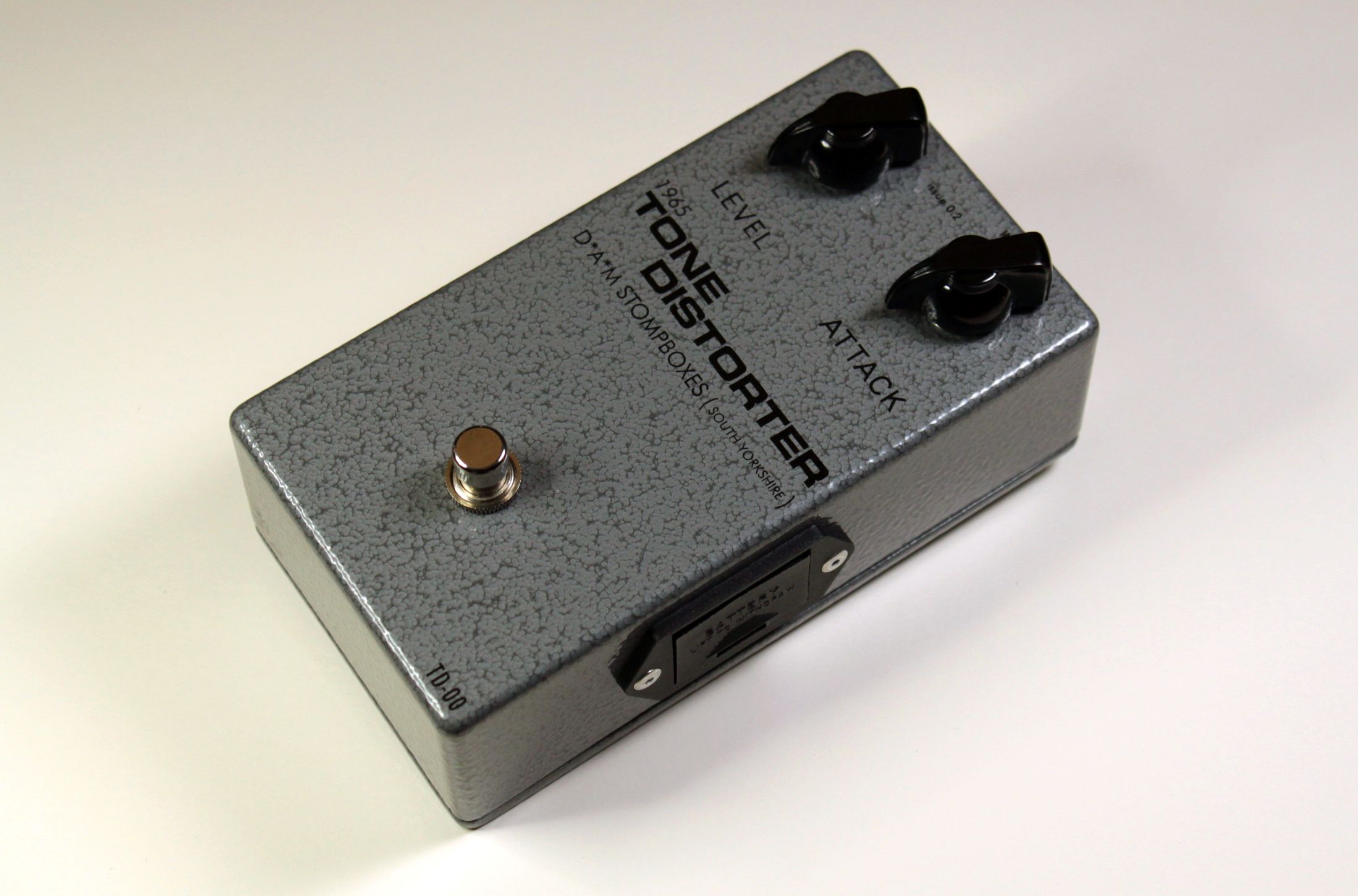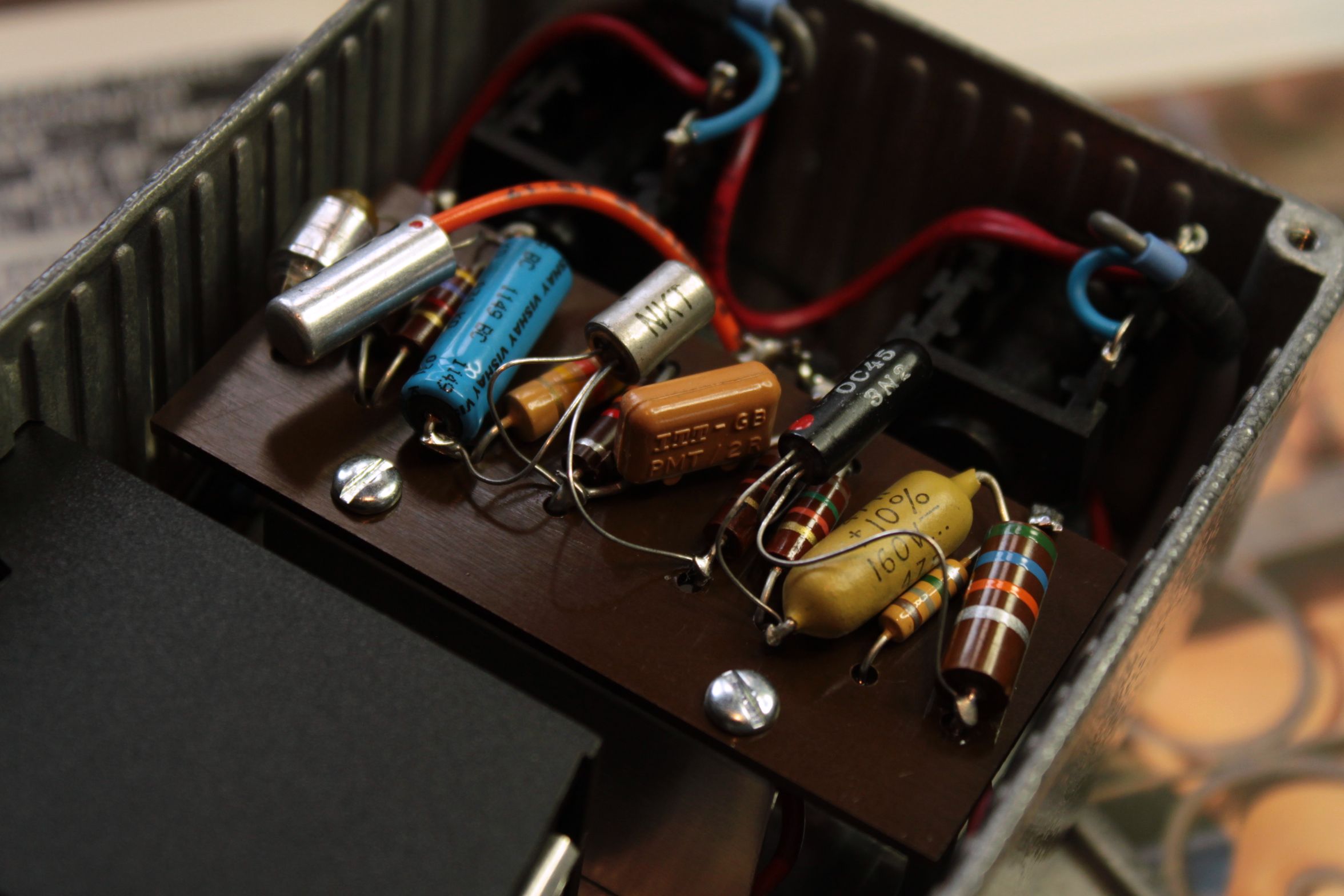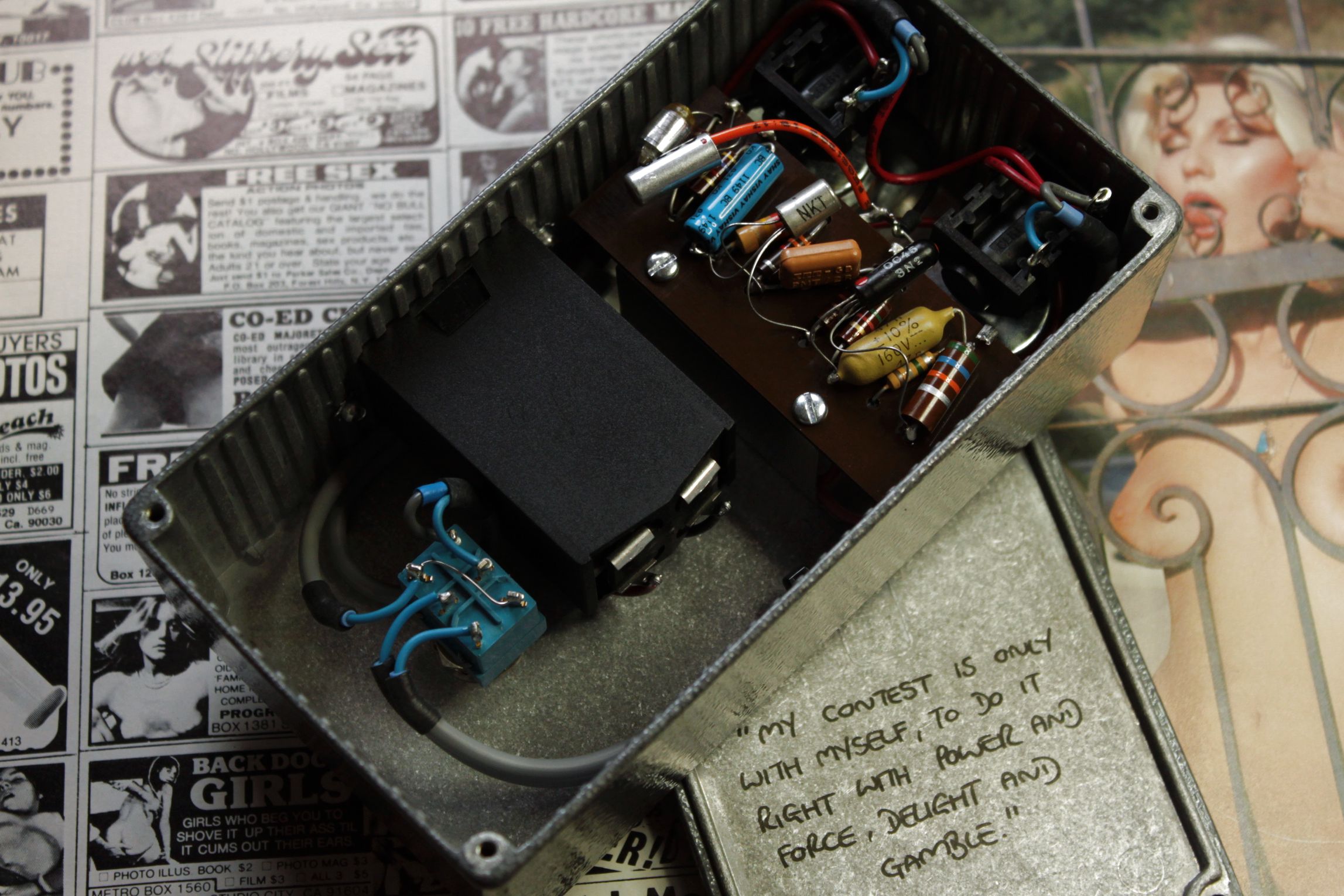


In early 2006 I experienced one of my first holy grail moments. A customer requested for repair work to be undertaken on a vintage 1965 Sola Sound Tone Bender MKI. Sure thing I said, not excited in any shape or form whatsoever. Approximately a month later I received an email from a gentleman wishing to sell a vintage Tone Bender, it was a second vintage MKI. Agreements were made and money changed hands, I was then the owner of a Tone Bender MKI. Happy days. I'd gone from chasing smoke and hunting ghosts to having two holy objects upon my work bench. Approximately a year later, I made the first batch of the D*A*M 1965's that was sold via the old D*A*M forum. To my knowledge, this was the first true replication of the original MKI circuit undertaken in any significant number since it's birth in 1965. Since that time I've made further limited runs of the 1965, had a further six original vintage units through my door, and also produced an exclusive replica of the original unit for Sola Sound.
The 2023 1965 Tone Distorter you see here is a culmination of 17 years worth of study and research upon this rare and elusive fuzz box. Presented in the classic D*A*M enclosure format and installed with a slide-out Bulgin battery drawer, the 1965 offers a vintage indulgence with modern day durability and dependence. Circuit construction is made upon a precisely cut piece of Tufnol Kite sheet that is loaded with stringently tested and auditioned passive vintage components and NOS germanium semiconductors.

The 2023 1965 is currently available in three model variants, the details of which are outlined below.
Agent H
The first ever vintage MKI I laid my hands on was a very battered and bruised dry letter transfer labelled unit. These could be referred to as the 'Hurst' models, as they bore no company moniker at that time.
This version is a sonic reproduction of that first Hurst MKI that I studied. The overall tone is much darker than what would occur soon thereafter. The fuzz timbre is sturdy, thick and pleasingly sticky at times, but bares some tonal traits of its origins, the Maestro FZ-1. There is an overall percussive choppiness and richness to the tone not present in the voicing of the later incarnations of the MKI.
The overall output of this version is a little less in overall output volume, and I do stress the dark nature of the tone. Used with an instrument loaded with single coil pick-ups and a tonally bright amplifier, and you have a beautiful balance to unite this circuit type with.
The Q2
Over the years I've encountered a few vintage MKI's where the operation of the Attack control had a peculiar trait. Rather than the peak of the sustain and distortion being and the end of the potentiometers travel, the peak instead occurs at approximately the 1'o clock setting (depending on operating temperature). Past this point the tonal output becomes dry and compressed with a very gated but musical Velcro fuzz type effect. This effect is due to the higher gain selection of the transistor in the Q2 position and the irregular selection of the associated bias resistors. The transistor is in essence passing the point of 'correct' biasing and becomes starved of voltage. An intentional design trait by Mr. Hurst or not, it can make for unique and complex fuzz tones that are part of the Tone Bender MKI history.
This option offers the greatest degree of sonic flavouring from a MKI circuit and has the additional useful benefit of being more forgiving of temperature fluctuations due to the biasing of Q2 and the function of the Attack control.
VZM
The freakier, weirder looking cousin to the Tone Bender MKI, the John Hornby Skewes Zonk Machine. This offering is based upon the second Zonk Machine I laid my hands upon, circa 2007, which was the first Veroboard loaded unit I'd seen. More aggressive in attitude than my own PCB loaded unit that I owned at the time, the Vero Zonk's extra snarl and bite blended well with the ultra bright and searing nature of this circuit type.
The raw brightness of the Zonk Machine can be shocking to the uninitiated mind, but a wondrous component within the right set-up. Personally, I favoured it with humbuckers and darker amp voicing's. In some ways it can feel as through it blends more efficiently with the character of the amplifier and instrument in use, than a darker MKI set-up, offering a primitive but dynamic overdrive effect.
Please note: Due to the increased brightness and treble boosting effect that can be produced, the perceived background noise will be higher than that of circuit types mentioned above.

To assure the premium auditory delivery of the tonalities of the above circuit types, each unit is individually tuned and features a mixture of new stock and NOS parts. Any NOS components used are full lead length previously unused parts and are stringently tested and cleaned prior to any sound testing being undertaken. The installed germanium devices are selected for high performance and longevity, and will differ from one unit to the next. These will be a mixture of vintage devices commonly by European manufacturers such as Mullard, Valvo, Brimar and Newmarket.
The displayed internal images are of the model 'VZM' and the circuit features a Valvo OC78, a Mullard OC45 and a NKT 281.
Dimensions: 152x82x50mm
Finish: Tri-mite Hammertone
Power Supply: PP3 battery only
Controls: Level, Attack
Construction: Point-to-point on Tufnol Kite sheet
Transistor selection: NOS miscellaneous British manufacturers.
Inception date: February 2007
Units produced to date: 206

© Copyright David A. Main 2023AD